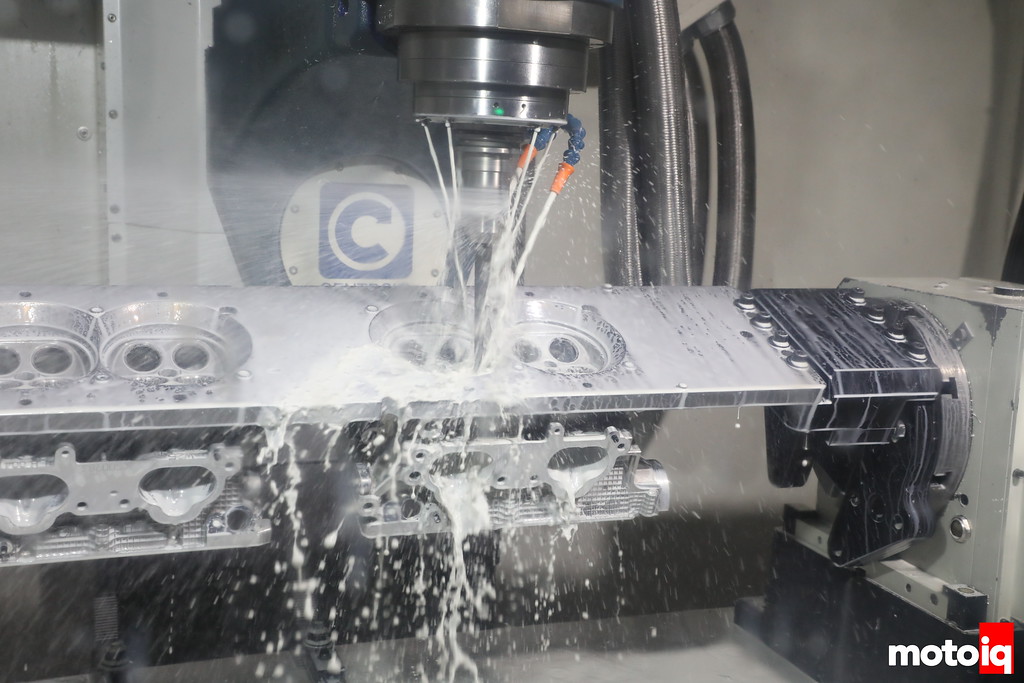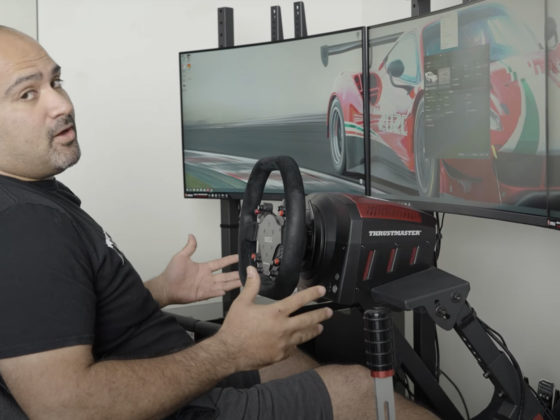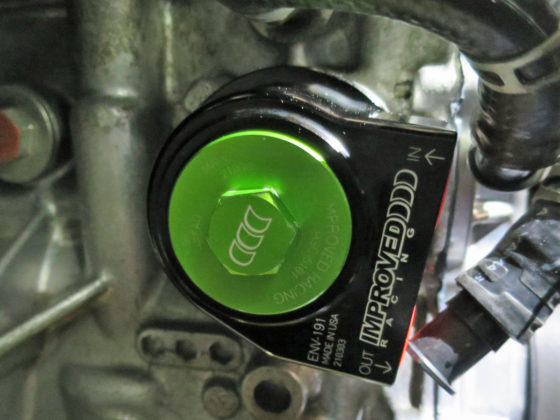
Here is the ported infamous Subaru exhaust port with the dogleg on the back cylinders. No matter what you do, you cannot bring these ports to the same flow volume and curve as the front cylinders. The IAG porting brings it to within 8% or so though which is about as good as it can get with the long and curved back cylinder exhaust ports.

Our heads are laid out and ready for assembly.

The valve stems are dipped in assembly lube.

Then the valves are loaded into the head. Our technician noted how smoothly our WPC-treated valves glided into place.

Here are our GSC valves in place. Look how the valve job has them sitting nice and high on the seats. This is best for good flow. With the porting and perfect valve job, these suckers are going to flow well.

Next, the spring seats are placed into the spring pockets. These steel seats protect the aluminum head from chafing from the steel spring. Springs rotate while the engine is running so you need to consider the steel on aluminum rubbing action.




16 comments
“Cast iron cannot be used with stainless steel because of its tendency to gall.”
I had to look that up, because I didn’t think that it would be a good combination of metals together for a valve guide, but didn’t know for sure.
Is the dogleg on the exhaust port the reason for the famous ‘Subaru Burble?’
No, it isn’t, it’s the unequal length exhaust and cylinder pairing.
Can’t the exhaust system account for the unequal length and cylinder pairing?
That is the exhaust system, if you do an equal length 4-1 the motor sounds more normal.
Kudos on torque-plating the head for a valve job. One step further would be to CNC-machine the whole combustion chamber. The as-cast chamber is pretty consistent but i´ve seen irregularities of up to 1,5cc on some Japanese heads.
yes, we found the same
What are the chances that IAG will add the WPC treatment as an option for their motor builds? I’m assuming that for now there would be some level of management that the custom would have to do between WPC and IAG to get the parts treated before assembly etc.
You would have to ask them, they were impressed with the WPC parts but it would add considerably to the cost of a build because of shipping and time delays.
Are the valve stems treated for wear, such as chrome plating or nitriding? If so, does the WPC process affect that treatment negatively?
The exhaust valves are chrome and the intake is nitrided. It won’t affect them.
I’m impressed the valve clearances can be computed and they are all the same.
I’ve seen a couple companies in Germany offering CNC golf ball machining to the intake valves. (@ngmotorsports on Instagram). Do you think this would make any difference to the flow based on golf ball aero principles? I haven’t seen them release and benchflow data.
I personally think it’s not worth the effort in a general sense. In some cases, you might want to thicken the boundary layer in some places to improve velocity.
nice build
too bad you miss a few important things
only real subie builders know
Like what? We are real engine builders and IAG is one of the best Subie engine builders in the country with a winning track record in actual competition.
Get real ken. Fess up.